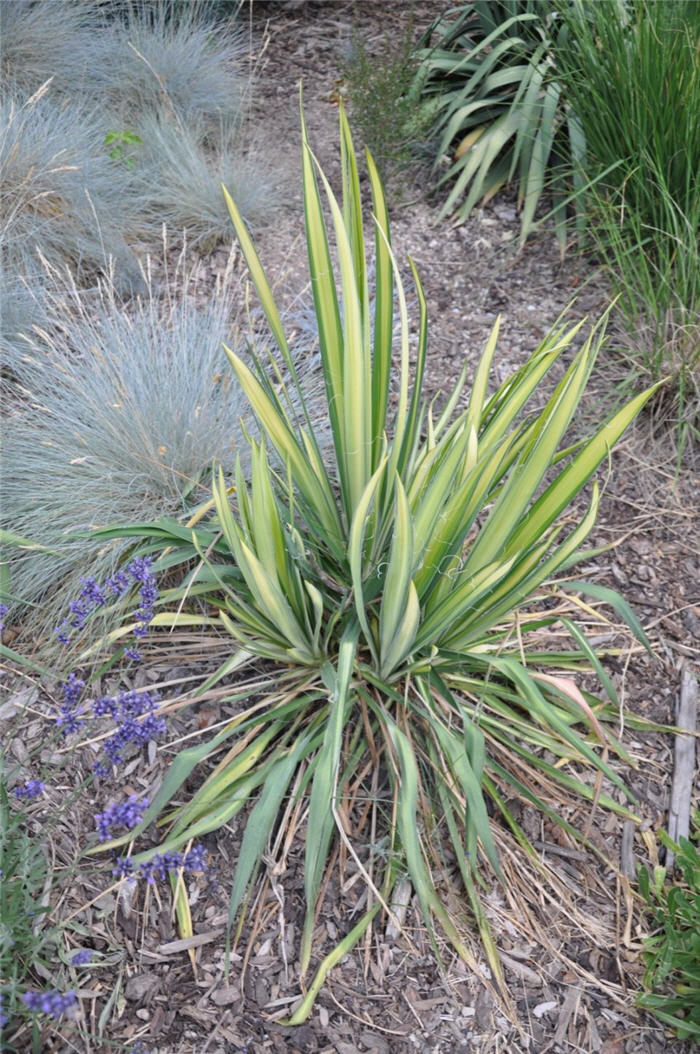| Botanical Name: Yucca harrimaniae | |
| Common Name: Harriman Yucca |

-
Anatomy
-
Culture
-
Design
Plant Type
Broadleaf Evergreen, Shrub
Height Range
3-6'
Flower Color
White
Flower Season
Spring
Leaf Color
Green, Blue Green
Bark Color
n/a
Fruit Color
n/a
Fruit Season
n/a
Sun
Full
Water
Very Low, Low
Growth Rate
Slow
Soil Type
Sandy, Clay, Loam, Rocky, Unparticular
Soil Condition
Average, Poor, Well-drained, Dry
Soil pH
Neutral, Basic
Adverse Factors
Invasive
Design Styles
Japanese, Meadow, Mediterranean, Ranch, Spanish
Accenting Features
Fragrance, Showy Flowers, Silhouette, Specimen, Unusual Foliage, Unusual Shape
Seasonal Interest
Winter, Spring, Summer, Fall
Location Uses
Background, Shrub Border, Foundation, Walls / Fences, With Rocks
Special Uses
Hedge, Screen, Naturalizing, Small Spaces
Attracts Wildlife
Birds
Information by: Stephanie Duer
Photographer:
Photographer:
-
Description
-
Notes
Harriman yucca is a striking accent in a dry, naturally-styled landscape. Leaves are evergreen, sword-like, narrow and tappering to a point, with sharp tips, and form clumps to 3 feet tall and wide (though they do colonize over time and can become wider). Flower spires are up to 5 feet tall and are lined with bell-shaped, creamt flowers tinged with purple. The leaves are used to make a course rope.
Grow in well drained, sandy-gravelly soil in full sun, though is surprisingly tolerant of some part shade. No maintenance is needed, though you can remove the flower scape after the plant has finished blooming. The leaves are spiny, so plant it where it won't interfere with a walkway. Yucca are clumping, and so in time will form large colonies. Frost tolerant to -20 F.